I am sure you have heard many stories of people struggling with a car-bearing issue, and that has brought you here to seek help from our guide. First of all, it is important to learn about bearings and their failure indications as every car owner has to experience noises while turning or even issues with steering control at some point or the other; with that being said, let me enlighten you about all the necessary information this article revolves around. To get started, we will discuss what this article will cover and how it can benefit all motor vehicle owners. First off, we’ll discuss the warning signs associated with this issue; then, we will discuss the major causes of why the assembly failed in the first place. It is a fact that the cost of rear wheel bearing replacement is not very high, so after we have covered the causes in sufficient detail, we will tell you how much it would normally cost. Last but definitely not least, we will tell you in detail the consequences a car owner may face if he doesn’t get the bearings looked at. By the end of this guide, you should be able to understand how to identify a faulty wheel bearing and what to do in order to solve the problem. Let’s get started so we can work together to improve your ride quality.
What Are the Signs and Symptoms of a Bad Wheel Bearing?
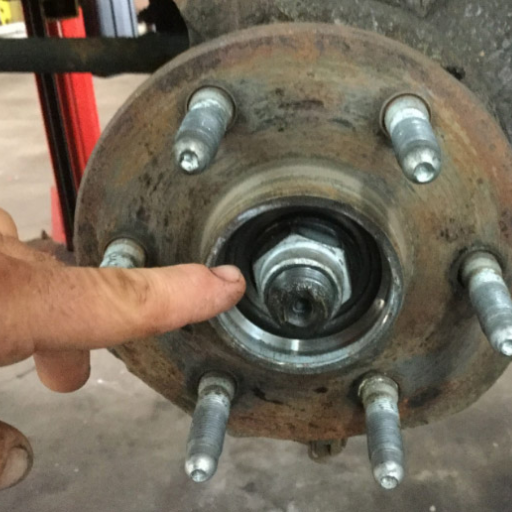
let us now consider the signs and symptoms that may indicate a failing wheel bearing; detecting such signs early enough may save the bearing from undergoing further damage and ensure safe driving in the future. Pay attention to the following indicators:
- Unusual Noise: When a wheel bearing is faulty, one of the most prominent symptoms is a peculiar noise from the respective wheel, which can be grinding, roaring, clicking, humming, or anything similar. These noises are also likely to become louder when the vehicle is turning, or the speed is increasing.
- Vibration: Strange vibrations, often felt in the steering wheel or even the whole vehicle, may also indicate that a wheel bearing is faulty. The more damage to the bearing, the more the vibrating sensation, which will lead to an uncomfortable ride.
- Uneven Tire Wear: Another common sign of a failing wheel bearing is the uneven wear of tires. If you notice that the tread pattern on one of the tires bears off quickly or unevenly than the rest, then there might be an issue with one of the wheel bearings.
- Loose Wheel: Wheel discrimination can be caused due to badly damaged or old wheel bearings. This wobbling sensation, if felt while driving, means the wheel bearing needs to be replaced with immediate effect.
- Difficulty Steering: A failing wheel bearing affects one’s steering ability in some cases. There is a tendency of the affected person to complain about increasing chances of difficulty when steering the car, especially when the vehicle is moving at slow speeds or when a sharp turn is taken.
Make sure to have your wheel bearings checked and replaced where necessary if you notice any of these signs: noise coming from the wheel, irregular wear of the tire, vibration whilst driving, or excessive play on the wheel. Failing to address a malfunctioning wheel bearing could escalate the situation and cause even more damage to your vehicle’s axle and brakes, increasing the level of danger posed to both you and other road users.
Common Noise Indications
however, these could also be signs of bad wheel bearings: the list comprises noise indications, which are more common than the first.
- Grinding Noise: During movement, a persistent noise from the wheels may suggest the need for a replaced wheel bearing. The sound has also been identified as a metalliferous noise which becomes amplified when the car accelerates.
- Humming or Roaring Noise: When operating at high speeds, a humming or roaring sound could mean there is a drowned wheel bearing. Such kinds of ancillaries, however, could be heard only at a higher velocity.
- Clicking or Snapping Noise: A tardy wheel bearing could be suspected when turning corners and clicking or snapping noises are registered. This noise can be amplified by lack of oil and uneven wear.
A bad wheel bearing can create a noise. Once that noise is noticed or if you suspect that you have one, have your wheel bearing checked and perhaps serviced. If you neglect a bad wheel bearing it may cause further harm to your car’s axle and brakes and put you in jeopardy when driving the vehicle.
How a Bad Wheel Bearing Affects Your Tire
a defective wheel bearing is bound to negatively impose its effects on your tire. For instance, if the tire has uneven wear determined by the wheel bearing offset, it is because the uneven tire wear caused by the faulty wheel bearing has resulted in the term ‘edge’ being introduced. Bald patches and excessive tread cutouts are just the beginning, as this disorder could eventually lead to tire bursts. Inappropriate wear on the tires changes their contours and centers of mass and negatively impacts the tension balance within the vehicle, which is critical for road safety. Neglected wheel bearing failures could worsen the situation even further, damaging tires and impacting the overall performance of the vehicle.
Impact on Steering Wheel Control
Best Practice Theorem states that safety measures must be in place so as not to understate an issue that could significantly compromise the safety of drivers; in this case, an expert underlines how a damaged wheel bearing could rock the ability of a steering wheel to work. The influence of the deteriorated wheel bearing on steering control is disturbing. First off, such a situation when the wheel bearing gets damaged results in excessive axle clearance and vibrations in the wheel assemblies, causing a deflection in the steering response. This compromised steering control would make it more difficult to steer through intersections, stabilize the vehicle within a lane, and correct the vehicle’s position on the roadway. Timeliness in remedying these wheel bearing problems will translate to safety and efficiency concerns when using the steering system of the vehicle.
How Does a Wheel Bearing Failure Occur?
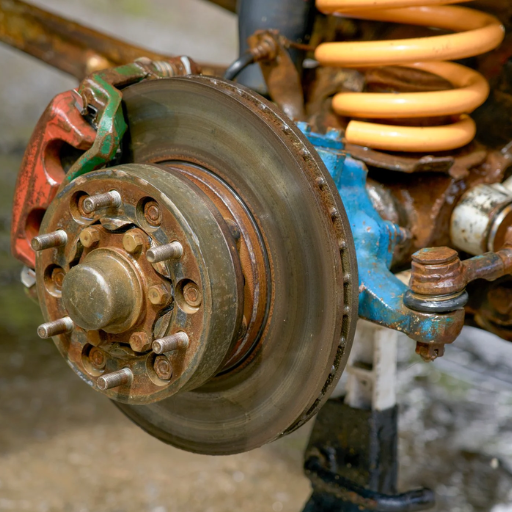
In our opinion, a wheel bearing could fail for a number of reasons, Some of the reasons could be
- Lack of Lubrication: Insufficient lubrication or using an incorrect lubricant can result in increased wear on the wheel bearing to the point of failure.
- Excessive Load: Subjecting the wheel bearing to excessive load by overloading the vehicle will lead to failure of the wheel bearing as a soldier succumbs to a battle.
- Water and Contamination: The wheel bearing is also affected by moisture, dirt, and other impurities. Such elements can cause corrosion and pitting.
- Improper Installation: Inappropriate techniques of installing the wheel bearing, for example, failing to torque nuts correctly or faulty seals, can introduce a possible modification to the bearing, which increases the chance of failure.
- Age and Wear: Wheel bearing elongation is a common phenomenon, especially with mileage, as wheel bearings are subjected to mechanical forces in daily operations. However, old elongating bearings are more vulnerable to susceptibility and should be monitored and fitted where appropriate.
These causes have to be remedied and additionally, timely measures for the maintenance of the wheel bearings have to be put in place so that failure does not occur and the vehicle performance and safety is guaranteed. Any problems with wheel bearings are more likely to be prevented through proper maintenance, inspection, lubrication, and replacement.
Causes of Bearing Failure
There are many reasons why the bearings get weaker and bear no alternative but to fail over time inevitably. These reasons are termed as the causes of bearing failure. Let us take a look at some of the causes of bearing failure:
- Lack of Lubrication: Improper or inadequate lubrication has an inverse effect by increasing friction and generation of heat, which in turn leads to increasing wear rate and, thereby, hiring of bearings. Regular lubricant replenishment is also accompanied by industrial practice to be able to achieve maximum efficiency and avoid untimely breakdown.
- Contamination: The exposure of the bearings to contaminants like dust dirt, or even water or moisture can damage the bearing and affect its performance. In such cases, the application of protective measures like sealing against environmental factors is necessary for the smooth functioning of the mechanisms containing the bearings.
- Improper Installation: Wrong installation techniques, including inadequate torquing or misalignment, result in uneven confinement of the respective bearings and subject them to high stress, which culminates in quicker failure. Misplacement of bearings requires the use of installation procedures stipulated by the manufacturers to avoid future casualties.
- Overloading: Stresses and fatigue caused by loads in excess of the intended capacity eventually result in failure of the component over time. Consequently, knowledge of load limitations and apportioning weight to avoid exceeding them are fundamental ways of extending the lifespan of the bearings.
- Age and Wear: Wheel bearings age with tire use and vehicle mileage, and as time wears them, they are more susceptible to malfunction and rotating components failure and thus should be replaced in the needed timeframe.
If you manage to eliminate these potential causes of bearing failure and initiate preemptive maintenance protocols, the chances of one looming or materializing are greatly minimized and you are able to reap the maximum functionality and security expected from your vehicle. Bearing failure causes are easy to wring out and make them last; they simply require regular checking, cruelling with the right oils, and changing them on time.
The Role of Vibration in Bearing Wear
I must take into consideration the impact vibration has on the wear of the bearing. Vibration is one of the major factors that determines the performance and life of wheel bearings. Heavy vibrations can initiate processes that cause the components of the bearing to wear out, thus causing the bearings to fail prematurely. It becomes critical that all vibration problems are resolved as quickly as possible to avoid further damage and ensure the bearings are functioning properly. Appropriate checks and servicing, alongside the provision of sufficient lubricant, can assist in reducing the rate of vibration wear and tear, thereby extending the working life of the wheel bearings.
How Much Does It Cost to Replace a Wheel Bearing?
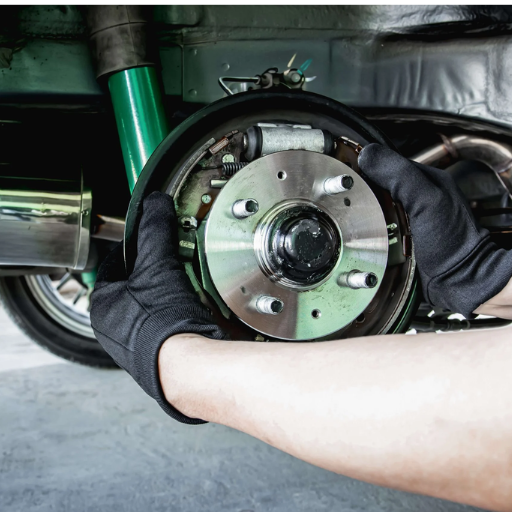
the cost of replacing a wheel bearing will depend on various factors. Usually, the charge comes between $150 to $600 per wheel, which roughly caters to parts and labor. The make and model of the vehicle, where the repair shop is located as well as whether the bearing has to be installed on its own or with some other repair influences the overall cost. It is sensible to speak with a qualified mechanic or repair shop to get a more accurate quote for your specific requirements and situation.
Factors Influencing the Cost to Replace
Different aspects impact the cost of replacing the wheel bearing. They include:
- Vehicle Make and Model: It is quite reasonable owing to the fact that the design of the wheel bearing and parts required for a specific vehicle are not the same, and thus, different automobile makes and models might yield different costs.s
- Location of the Repair Shop: As relocation comes about, the labor rates change, the parts availability changes and the cost of the repair shop will also be affected.
- Individual or Full Set Replacement: If the condition of your wheel bearing is okay, you might as well only consider swapping a single set bearing to suffice your needs, however when multiple sufficient bearings are needed then cost does differ in terms of total.
- Type and Quality of Parts: Overall, the more expensive and new components may likely be of better quality than those older and cheaper ones available, however, would come at costs higher than the low quality ones.
- Additional Repairs: The wheel bearings could turn out to be the fault within a far more complex picture wherein brakes, axles, or other critical components of a vehicle are damaged at an additional cost for repair.
It is advisable to reach out to a professional mechanic or an auto repair shop to get a more accurate estimate relative to your car as well as the repairs that you will be looking for. In this way, they will be able to give you a comprehensive cost evaluation, hence making an informed choice.
Comparing DIY and Mechanic Replacement Costs
It should be noted from the start that there are two options regarding the replacement of wheel bearings: DIY (do-it-yourself) approach or hiring professional mechanics. To this end, let us highlight the main characteristics of the two:
- DIY Replacement:
- Pros: It’s highly likely that you’ll save on labor costs if you’re taking up the replacement yourself. If you have the tools, skills, and experience, it can be a suitable comer. You also get to decide on the parts and the speed of the work.
- Cons: A DIY replacement has its effects as it requires some level of technical know-how and experience around automotive systems. Otherwise, if you are not so sure of your skills, there are, unfortunately, chances of making mistakes that could lead to bad installations and, with time, cause more damage that will need expensive repairs.
- Mechanic Replacement:
- Pros: With the diagnosable skills and vast experience of professional mechanics, these professionals do the job accurately and efficiently. They have the technical know-how, experience, and equipment needed for the replacement, which minimizes the chances of mistakes. Furthermore, good mechanics can also offer warranties on parts and labor associated with damages sustained during the service.
- Cons: The ordinary cost of professional labor tends to be higher than doing the job yourself. Nonetheless, the expenditure involved in seeking professional services may prove worthwhile if only to avoid stress, as well as guarantee good results and, as a result, avert expenditures in the future.
Finally, it is up to your personal comfort, experience, and confidence on whether you want to replace the wheel bearings yourself or employ a mechanic. Should such tasks seem daunting to you, consider turning to a professional mechanic to do the job, as they will replace the wheel bearing with utmost precaution and care.
Ho to Check for a Bad Wheel?
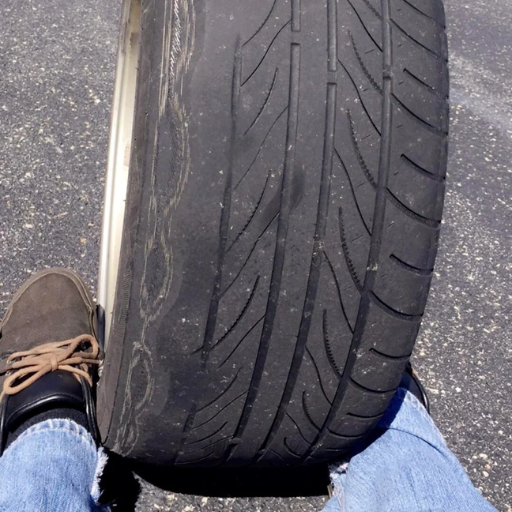
I check a bad wheel bearing and incorporate several audible and physical indicators that assist in the diagnosis. Here’s a brief response to the inquiry, “How to Check for a Bad Wheel Bearing?”:
- Listen for Unusual Noises: Whenever you hear grinding, growling, or humming sounds in the wheels while driving, these sounds serve as warning signs of a worn-out or damaged wheel bearing.
- Feel for Vibrations: Also bear in mind vibrations, especially when they occur at higher speeds. Wheel bearings are known to be loose when there are excessive vibrations.
- Check for Wheel Play: Use tools to elevate the vehicle, stifle each wheel, and successively attempt to push-wiggle them sideways. If a wheel exhibits too much wobble, then it is highly photo micrograph bearing either loose or on strike.
- Inspect for Uneven Tire Wear: One side wear or center wear, whenever there is such irregular wear, it happens due to a bad wheel bearing misplace the axis of the wheel.
Please remember, if you feel that there is a possibility of a faulty wheel bearing or if you experience any of these indicators, the best course of action would be to get in touch with an experienced mechanic for the correct assessment and timely restoration of the damaged part.
Testing for Grinding Noise and Other Sounds
The presence of a grinding sound or similar ones could potentially highlight problems with wheel bearings, states an expert in the field. In particular, when turning, the presence of a grinding noise within the wheels can be suggestive of a faulty or worn-out wheel bearing. Furthermore, whilst driving, one should also pay attention to any rattling, clattering, or humming noises as they, too, could signify wheel bearing faults. It’s crucial to report these sounds without delay and contact a qualified specialist who will carefully inspect and fix the problem.
Inspecting for Loose Bearing or Play
One of the eye and ear noticing possible issues that may arise with the wheel end is done by simply making the loose bearing or play inspection. One may also carry out a basic physical test by grabbing the tire at the 12 o’clock and 6 o’clock positions and trying to rock it back and forth to see whether there are any excessive movements or play, which indicates a possibility of a loose bearing. Moreover, you should also look for abnormal wear patterns on the tires because such patterns often cause issues with the wheel bearings. In the event of such scenarios, it is best to look for a licensed mechanic because he is able to wield tools and conduct a thorough check without dealing any damage to the vehicle.
What Happens When Wheel Bearings Fail?
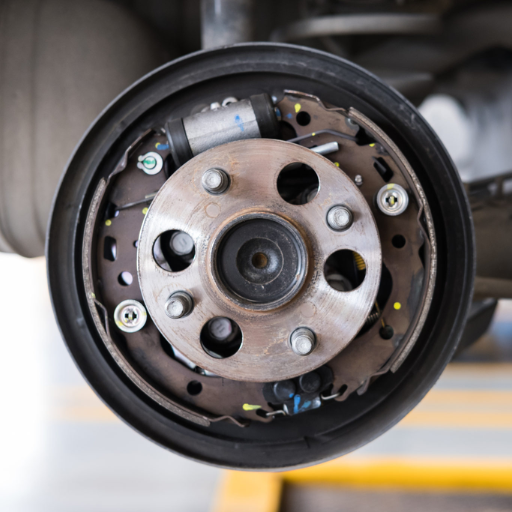
the breakdown of wheel bearings can cause dire repercussions to either the vehicle or even an individual’s life. The following are the main implications:
- Potential Brake and Axle Damage: It has been established that a worn-out wheel bearing causes the wheel to become loose and vibrate, which would eventually result in overstraining the brake system and the axles. Gradually, this may cause undue degradation of these critical parts, affecting the overall ability of the vehicle’s control and braking systems.
- Compromised Safety: Wheel bearings are very important in ensuring that the wheels remain intact and rotate smoothly. The moment they stop working in such a way, steering and speed control management becomes uncontrollable, and traction is brought to virtually zero with the risk of one or more wheels coming off. The risk of a collision remains high when most corners or sudden stops are performed.
In order to avoid further damage, it is critical to address wheel bearing problems in a timely manner and to obtain assistance from a certified mechanic for the upkeep of the vehicle’s proper functioning as well as the security of the driver and the passengers.
Potential Brake and Axle Damage
it is important to appreciate the implications that failed wheel bearings may impose on the brakes and axle – which are also vibrations cut off from noise. The impact of failed bearings in multiple aspects of braking and axle systems cannot be emphasized enough. To put it succinctly, the question of how failed wheel bearings affect safety is as follows:
Above all, failed wheel bearings aggravated junctures and unsteady shifting wherein dynamic forces were exerted on the axles and braking systems, strengthening their brittle malfunctions, cuts, and inefficient functions. All these together decreased the efficiency of all-around braking and overall control of a vehicle. Furthermore, when a wheel bearing fails, it has a severe effect on the controllability of the vehicle, diminished pulling power, or, in the best-case scenario, the wheel does not detach. All these issues sharply heightened the risks of the accidents, especially during high-speed reversible accelerations or immediate deceleration. In resolving shallow spinning axle issues, the assistance of a competent mechanic is required to make sure that the vehicle does not break down in the future, work properly allows using the plane without jeopardizing the driver and passengers safety.
How Failed Wheel Bearings Affect Safety
Safety can be substantially compromised when there is a malfunction of wheel bearings. The breakdown of wheel bearings can give rise to several issues with safety, which are as follows:
- Loss of Vehicle Control: There is a risk of all bearings functioning with increased wear and vibration, and this can eventually cause severe vibration or wheels to be out of alignment. Steering the vehicle would become an insecurity, especially when one intends to accelerate at high speed or suddenly apply the brakes during an emergency.
- Decreased Braking Efficiency: The bearings have the potential to hang the weight of the wheels as well as the forces acting on them on the braking systems. This creates an unfavorable tension on the brake system, which can lead to brake components being destroyed or worn out quicker than anticipated, which in turn can affect the efficiency of the vehicle brakes. Inadequate braking systems would more or less correlate to a greater chance of an accident occurring.
- Wheel Detachment: If defects in wheel bearings are too severe, discs can get detached from the wheel entirely. This is because a defective wheel bearing allows too much movement or alteration of the wheel, which can cause the wheel to either become unbolted or fall off of the vehicle. This is extremely dangerous as it leads to uncontrollable spins which can put both the suspensions and bearings to the test in the event of an accident.
It’s important to act decisively and get help from an experienced mechanic. This will not only improve the performance of your vehicle but also guarantee the protection of the driver and passengers as well. Routine evaluation and servicing of wheel bearings are necessary to avoid additional damage, ensure appropriate workings of the vehicle as well as reduce chances of accidents that result from failure of the wheel bearings.
Reference
- Kelley Blue Book: How Do I Know if I Need a Replacement?
- SKF Vehicle Aftermarket: 4 Symptoms & Signs of a Bad Wheel Bearing
- Meineke: 6 Signs of a Bad Wheel Bearing
Frequently Asked Questions (FAQs)
Q: What are the key signs that a wheel bearing is bad?
A: A common symptom of a bad wheel bearing is a humming noise coming from the wheel area. Other indicators include grinding sounds, steering wheel vibrations, and increased tire noise. If you notice any of these symptoms, your wheel bearing may be going bad.
Q: How can I tell if the wheel bearing is worn out?
A: You can check for a worn bearing by jacking up the wheel and shaking it. If there is play in the bearing or the wheel has one side that feels loose, it might be a problem with the wheel bearing.
Q: What wheel-bearing noise should I listen to while driving?
A: A wheel-bearing noise often manifests as a humming or grinding sound that changes with vehicle speed. It might become louder when turning left or right, indicating a bad bearing.
Q: Can a bad wheel bearing affect my anti-lock braking system?
A: Yes, a bad wheel bearing can trigger a warning light for the anti-lock braking system. The poor condition of the hub bearing can disrupt the ABS sensor readings.
Q: How often should I replace wheel bearings?
A: Wheel bearings may need replacement every 85,000 to 100,000 miles. However, if you detect any bad wheel-bearing symptoms, it’s advisable to inspect and possibly replace them sooner.
Q: Is it more common for the front wheel bearings to fail compared to the rear?
A: Front wheel bearings can be more prone to failure due to their involvement in steering and handling. However, rear wheel bearings may also fail and should be checked if symptoms arise.
Q: How much does it typically cost to replace wheel bearings?
A: The cost to replace wheel bearings can range from $200 to $350 per wheel, depending on the vehicle and labor charges. It’s important to address any issues with wheel bearings promptly to avoid further damage.
Q: What might happen if I ignore bad wheel-bearing symptoms?
A: Ignoring symptoms of a bad wheel bearing can lead to severe consequences, including wheel hub failure, loss of steering control, or tire damage. It’s crucial to address these issues for safe vehicle operation.
Q: Can a problem with the wheel bearing cause vibrations in the steering wheel?
A: Yes, a bad wheel bearing can cause steering wheel vibrations. This is due to the uneven rotation of the wheel, which affects the vehicle’s handling.
Q: Are there different types of wheel bearings, and how do they affect the identification of issues?
A: Yes, there are different types, such as ball joint bearings and tapered roller bearings. Identifying issues might vary slightly depending on the type, but common symptom checks like noise and wheel play are applicable to all types.
